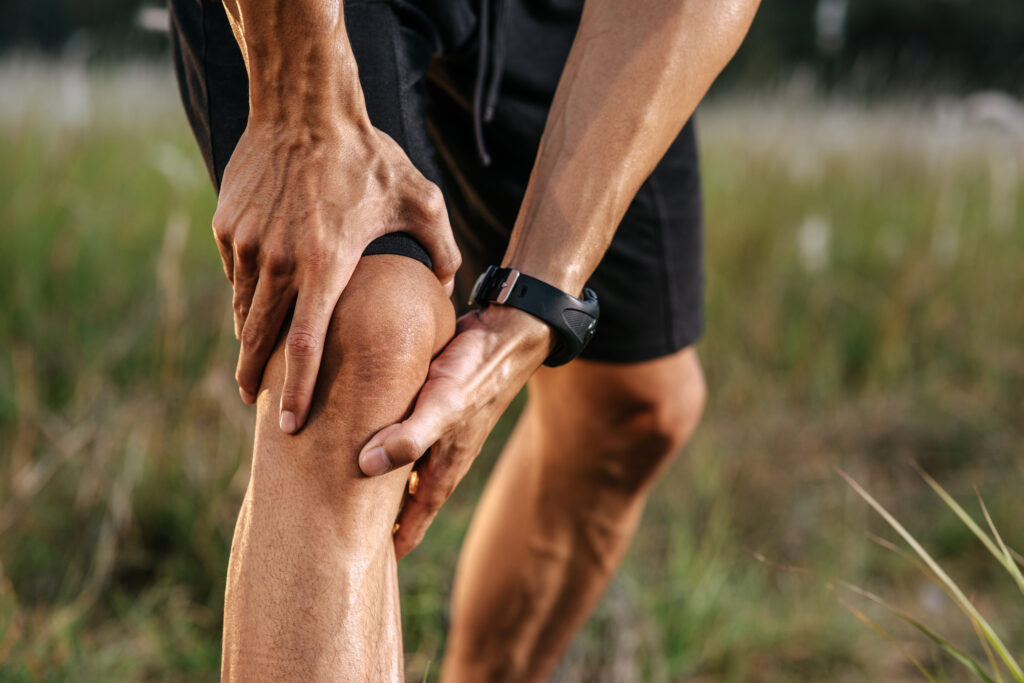In 2023, you might find that athletes are exploring a range of innovative treatment options to enhance their performance and recovery. From regenerative medicine to mindfulness techniques, these approaches are reshaping how athletes deal with injuries and optimize their training. You may be surprised by the effectiveness of cryotherapy or the impact of nutritional therapy on overall performance. Each of these treatments offers unique benefits that can considerably influence an athlete's journey. So, which of these options could make the most difference for you?
Regenerative Medicine
Regenerative medicine offers athletes a groundbreaking approach to healing and recovery. It focuses on repairing and regenerating damaged tissues and organs, allowing you to return to your sport faster and stronger. Techniques like stem cell therapy and platelet-rich plasma (PRP) treatment are at the forefront of this innovative field. These methods harness your body's natural healing abilities, targeting injuries at the cellular level.
When you undergo stem cell therapy, you're utilizing your own cells to promote healing. This can be especially beneficial for chronic injuries or conditions that haven't responded well to traditional treatments. By injecting these cells directly into the injured area, you can stimulate tissue regeneration and reduce inflammation. This targeted approach can lead to quicker recovery times and improved outcomes.
PRP therapy, on the other hand, involves drawing your blood, processing it to concentrate the platelets, and then injecting this rich solution back into the injury site. The growth factors in the platelets can enhance healing, making it a popular choice for athletes dealing with tendonitis, ligament injuries, or joint pain.
Both of these regenerative techniques aim to minimize downtime and maximize performance. By incorporating regenerative medicine into your treatment plan, you're giving yourself the best chance at a swift recovery.
It's an exciting time in sports medicine, and understanding these options can empower you to make informed decisions about your health and training. Embrace the future of healing and get back in the game!
Cryotherapy
As you explore innovative recovery methods, cryotherapy stands out as a powerful tool for athletes. This technique involves exposing your body to extremely cold temperatures for a short period, often through whole-body chambers or localized treatments. The primary goal is to reduce inflammation, alleviate pain, and enhance recovery after intense workouts or competitions.
When you step into a cryotherapy chamber, the temperature can drop to as low as -200°F. This sudden chill constricts blood vessels, which helps decrease swelling and inflammation in your muscles and joints. Once you leave the chamber, your body warms up, and blood flow returns to the affected areas, delivering oxygen and nutrients that promote healing.
Many athletes report feeling an immediate rush of energy after a session, which can be attributed to the endorphin release triggered by the cold exposure. You might find that regular cryotherapy sessions help improve your overall performance by enhancing recovery times, allowing you to train harder and longer.
Additionally, cryotherapy can aid in mental recovery. The invigorating experience often leaves you feeling refreshed and focused, ready to tackle your next challenge.
While the science behind cryotherapy is still evolving, many athletes swear by its benefits, making it a popular choice in recovery routines.
If you're looking to elevate your recovery game, consider incorporating cryotherapy into your regimen. It could be just what you need to boost your performance and keep you at the top of your game.
Electrical Stimulation
Many athletes find electrical stimulation to be an effective recovery method that targets muscle soreness and enhances rehabilitation. This technique uses electrical impulses to stimulate muscle contractions, which can promote blood flow and accelerate recovery. If you've been pushing your limits in training, incorporating electrical stimulation into your routine could help you bounce back faster.
You can use various devices designed for this purpose, including transcutaneous electrical nerve stimulation (TENS) units and neuromuscular electrical stimulation (NMES) machines. TENS can alleviate pain by blocking pain signals to the brain, while NMES focuses on activating muscles to improve strength and function. You may want to experiment with different settings to find what works best for your specific needs.
Incorporating electrical stimulation into your recovery regimen is simple. You can use it after workouts or during rest days to relieve soreness. Most devices are portable, allowing you to use them at home, in the gym, or even on the go. Just be certain to follow the manufacturer's instructions to avoid any discomfort or injury.
While electrical stimulation offers several benefits, it's crucial to complement it with other recovery methods like stretching, hydration, and adequate rest. Always consult with a healthcare professional or physical therapist to verify it's a suitable option for your specific injuries or conditions.
Nutritional Therapy
Nutritional therapy is a game-changer for athletes looking to optimize their performance and recovery. By focusing on the right nutrients, you can enhance your energy levels, improve endurance, and speed up recovery times.
It's not just about eating healthy; it's about eating strategically to support your training demands. Here are four key components to reflect on in your nutritional plan:
1. Macronutrient Balance: Confirm you're consuming the right mix of carbohydrates, proteins, and fats. Carbs fuel your workouts, proteins aid in muscle repair, and healthy fats support overall health.
2. Hydration: Staying hydrated is vital. Dehydration can lead to fatigue and decreased performance. Make it a habit to drink water regularly throughout the day, especially before, during, and after training sessions.
3. Timing of Meals: Pay attention to when you eat. Consuming a balanced meal or snack 30 minutes to two hours before your workout can provide the energy you need.
Post-workout, aim for a meal rich in protein and carbs to kickstart recovery.
4. Supplements: While it's best to get nutrients from whole foods, some athletes may benefit from supplements like protein powders or electrolytes.
Consult with a nutritionist to tailor supplementation to your specific needs.
Mindfulness and Recovery Techniques
Incorporating mindfulness and recovery techniques into your training routine can greatly enhance both your mental and physical performance. By focusing on the present moment, you reduce stress and improve your overall well-being. Mindfulness practices, such as meditation and deep breathing, help you cultivate awareness and manage anxiety, which can be vital during competitions or intense training sessions.
One effective technique is progressive muscle relaxation. By systematically tensing and relaxing different muscle groups, you can release physical tension that builds up during workouts. This not only aids in recovery but also enhances your body's awareness, allowing you to tune into how you feel physically and mentally.
Another powerful tool is visualization. Spend a few minutes each day imagining yourself succeeding in your sport. Picture every detail—from the environment to the sensations you'll experience. This mental rehearsal can build confidence and improve your performance when it counts.
Yoga is also an excellent way to incorporate mindfulness into your recovery. It promotes flexibility, strength, and balance while encouraging deep breathing and relaxation. By integrating yoga into your routine, you'll not only recover faster but also enhance your focus and mental clarity.
Finally, take time for self-reflection. Journaling about your training experiences can help you identify patterns, set goals, and track your progress. This practice not only fosters mindfulness but also keeps you motivated.
Conclusion
In 2023, you've got an incredible array of treatment options at your fingertips to enhance your athletic performance and recovery. Embracing regenerative medicine, cryotherapy, electrical stimulation, nutritional therapy, and mindfulness techniques can make a significant difference in how you train and recover. By integrating these innovative approaches into your routine, you can minimize downtime and access your full potential. So, why not explore these treatments and see how they can elevate your game?



